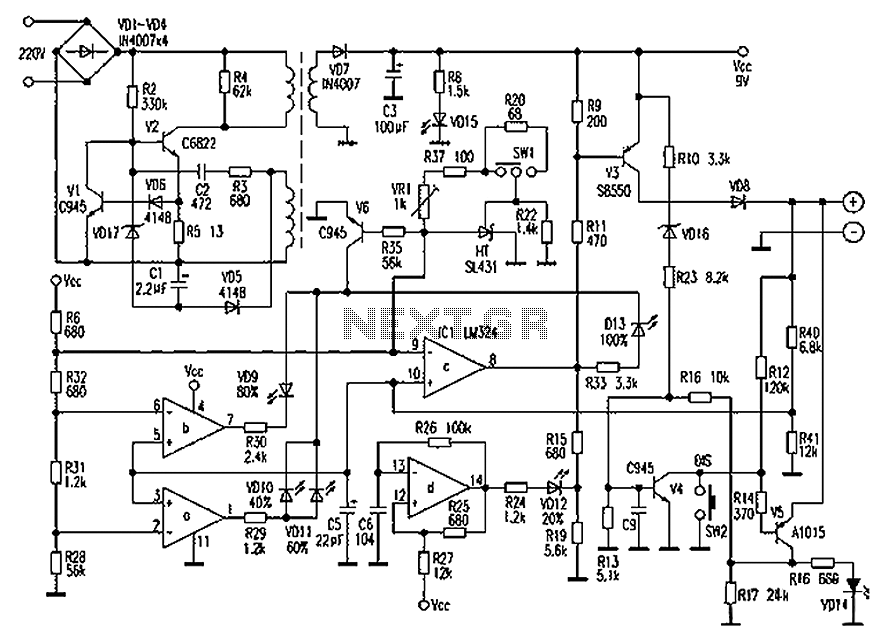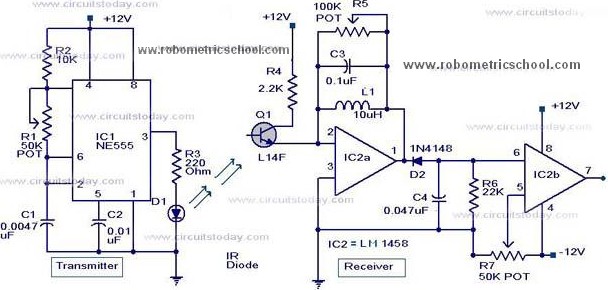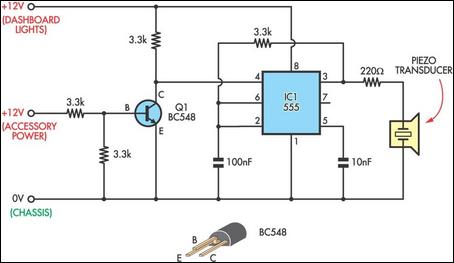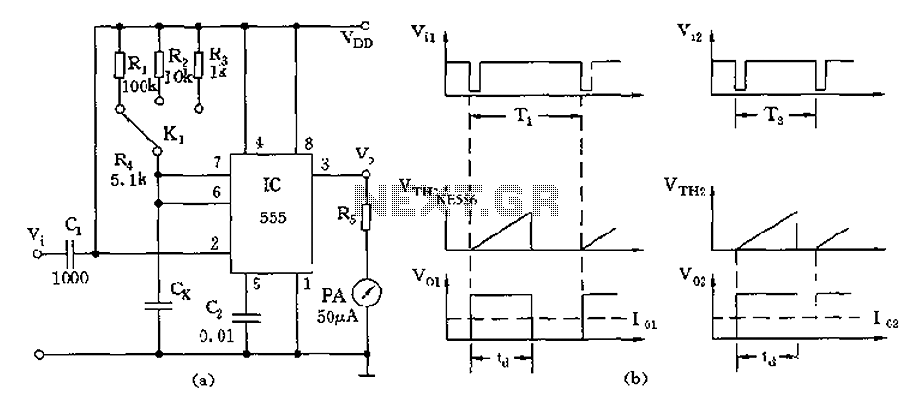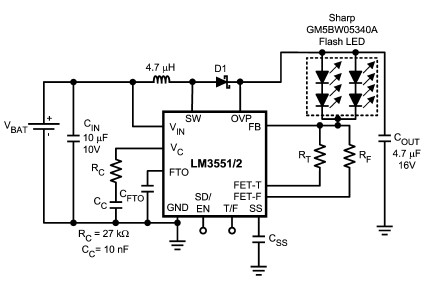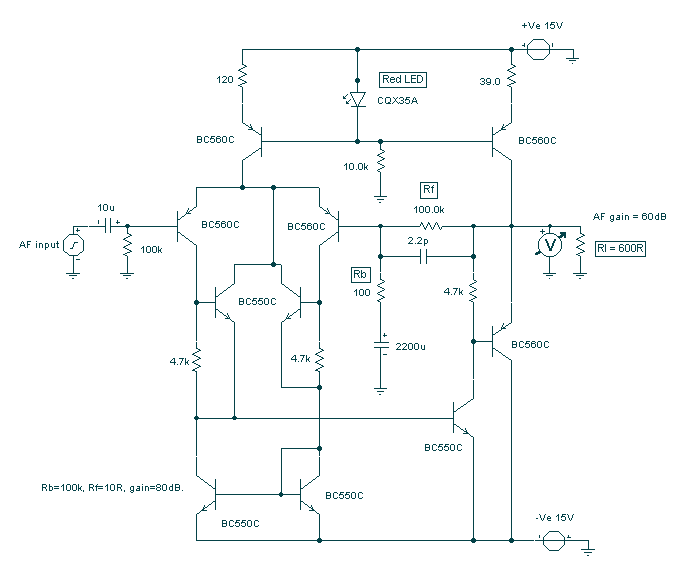
7025 ECC803S 12AX7A Tube RIAA Phono Preamplifier Schematic
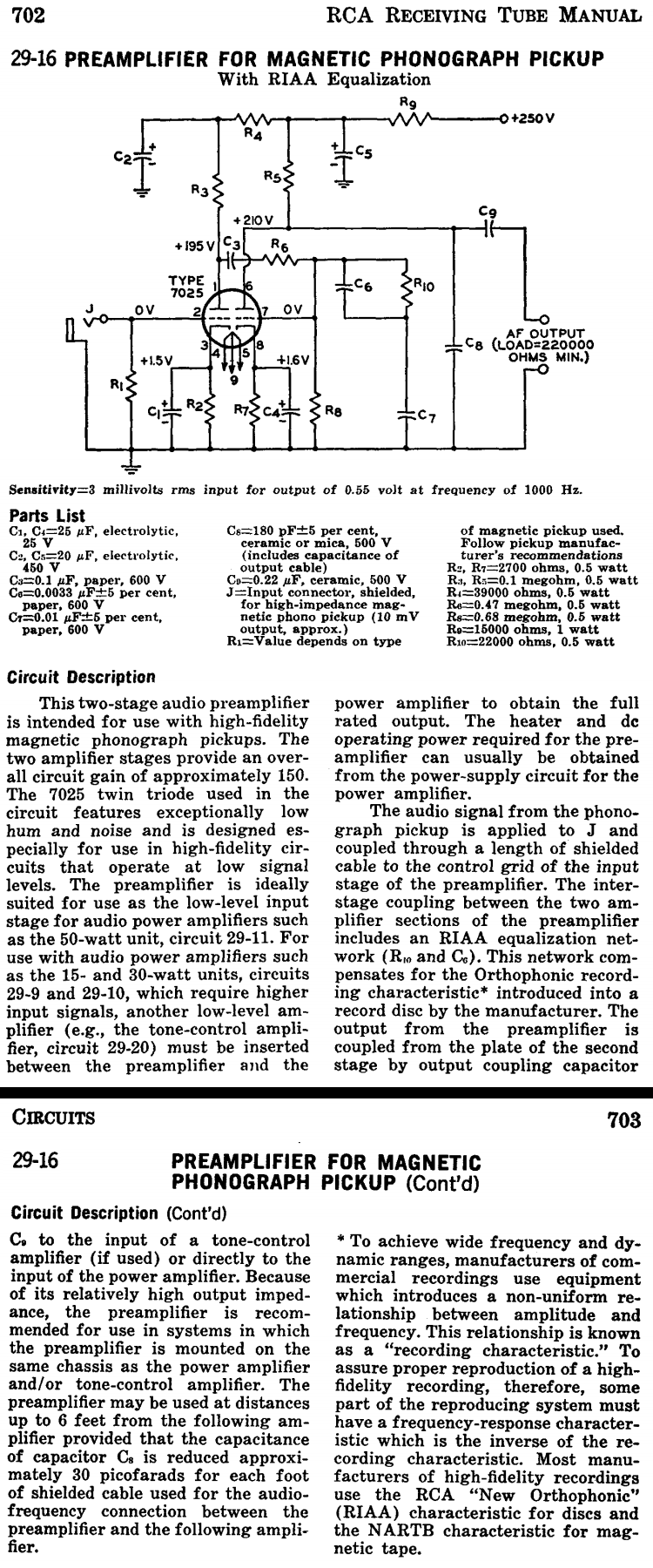
This two-stage audio preamplifier is designed for high-fidelity magnetic phonograph pickups, providing an overall gain of approximately 150. The circuit is sourced from the RCA tube receiving manual and is intended for use with the renowned RCA 7025 twin triode. Additionally, the 12AX7A and ECC803S twin triodes are compatible with this design. The phono preamplifier incorporates a passive RIAA equalization filter.
The two-stage audio preamplifier circuit is structured to amplify low-level signals from magnetic phonograph pickups, which typically output weak audio signals that require significant amplification. The overall gain of approximately 150 is achieved through careful design and selection of components, ensuring that the audio fidelity is maintained throughout the amplification process.
The circuit utilizes a twin triode configuration, specifically the RCA 7025, which is known for its low noise and high gain characteristics. The 12AX7A and ECC803S are alternative tube options that can be employed, providing flexibility in the choice of components based on availability or desired audio characteristics. Each of these tubes has distinct electrical properties that may slightly influence the sound quality and performance of the preamplifier.
The inclusion of a passive RIAA equalization filter is a critical feature of this phono preamplifier. This filter is designed to compensate for the frequency response characteristics of vinyl records, which are recorded with a specific equalization curve. The RIAA (Recording Industry Association of America) standard equalization ensures that the playback of records accurately reproduces the original sound, correcting for the inherent frequency response of the medium.
In summary, this two-stage audio preamplifier circuit is an excellent choice for audiophiles seeking to enhance the performance of their vinyl playback systems. Its design allows for high gain, compatibility with various twin triodes, and the essential RIAA equalization, making it a well-rounded solution for high-fidelity audio applications.This two-stage audio preamplifier is intended for use with high-fidelity magnetic phonograph pickups. The overall gain of the circuit is about 150. The circuit is from the RCA tube receiving manual and meant for use with the famous RCA 7025 twin triode.
12AX7A and ECC803S twin triodes can also be used with this circuit. The phono preamp uses a pas sive RIAA equalization filter. 🔗 External reference
The two-stage audio preamplifier circuit is structured to amplify low-level signals from magnetic phonograph pickups, which typically output weak audio signals that require significant amplification. The overall gain of approximately 150 is achieved through careful design and selection of components, ensuring that the audio fidelity is maintained throughout the amplification process.
The circuit utilizes a twin triode configuration, specifically the RCA 7025, which is known for its low noise and high gain characteristics. The 12AX7A and ECC803S are alternative tube options that can be employed, providing flexibility in the choice of components based on availability or desired audio characteristics. Each of these tubes has distinct electrical properties that may slightly influence the sound quality and performance of the preamplifier.
The inclusion of a passive RIAA equalization filter is a critical feature of this phono preamplifier. This filter is designed to compensate for the frequency response characteristics of vinyl records, which are recorded with a specific equalization curve. The RIAA (Recording Industry Association of America) standard equalization ensures that the playback of records accurately reproduces the original sound, correcting for the inherent frequency response of the medium.
In summary, this two-stage audio preamplifier circuit is an excellent choice for audiophiles seeking to enhance the performance of their vinyl playback systems. Its design allows for high gain, compatibility with various twin triodes, and the essential RIAA equalization, making it a well-rounded solution for high-fidelity audio applications.This two-stage audio preamplifier is intended for use with high-fidelity magnetic phonograph pickups. The overall gain of the circuit is about 150. The circuit is from the RCA tube receiving manual and meant for use with the famous RCA 7025 twin triode.
12AX7A and ECC803S twin triodes can also be used with this circuit. The phono preamp uses a pas sive RIAA equalization filter. 🔗 External reference
